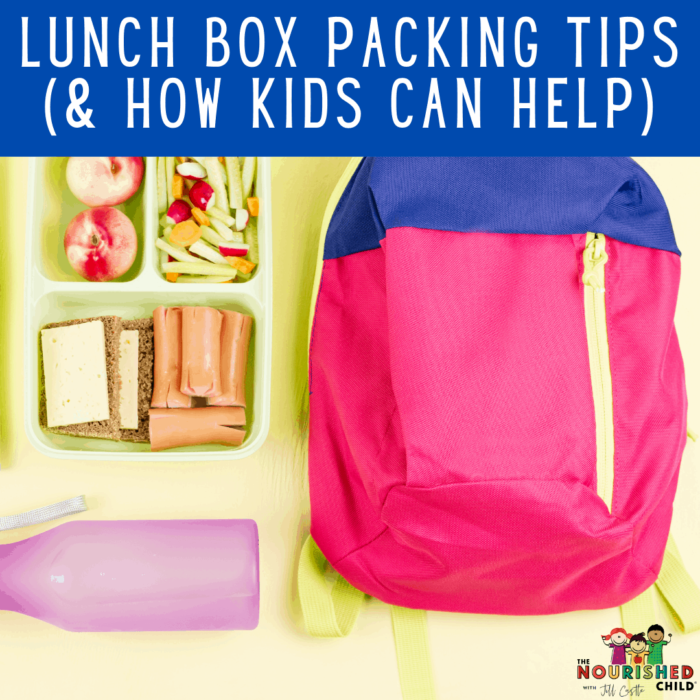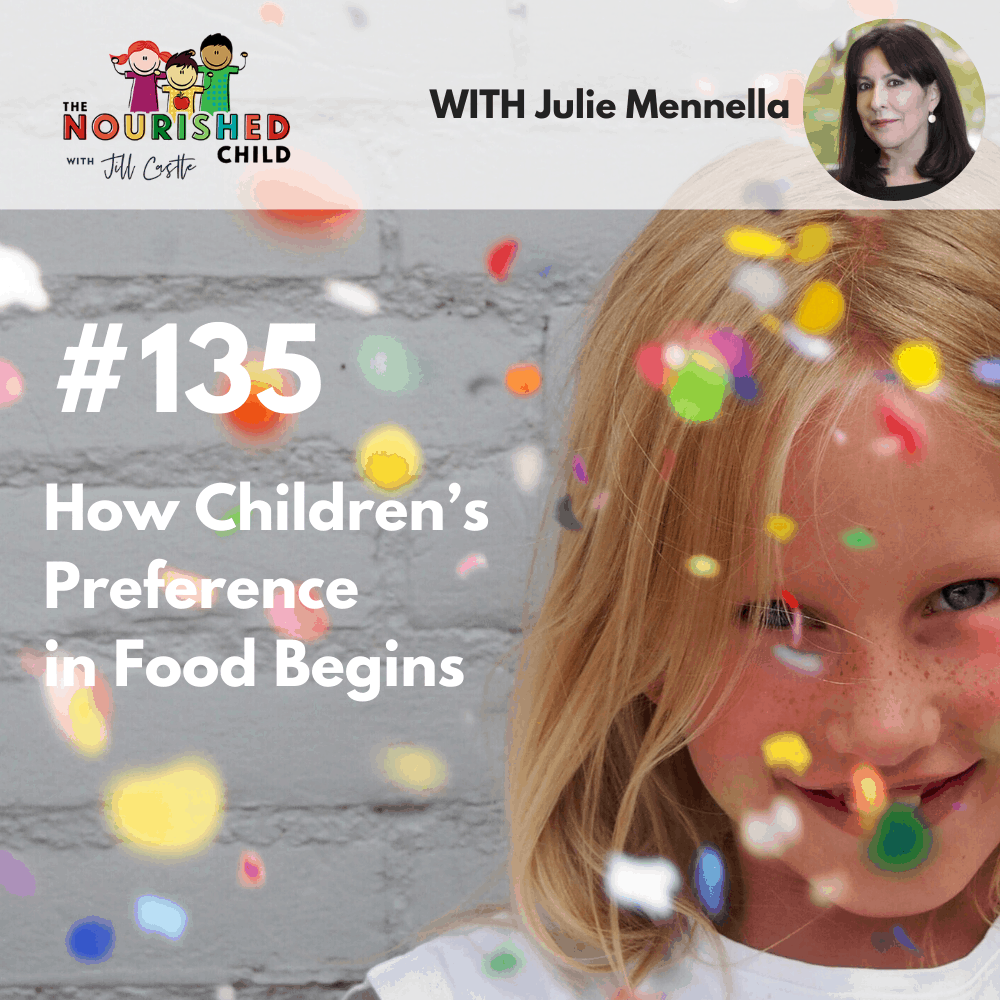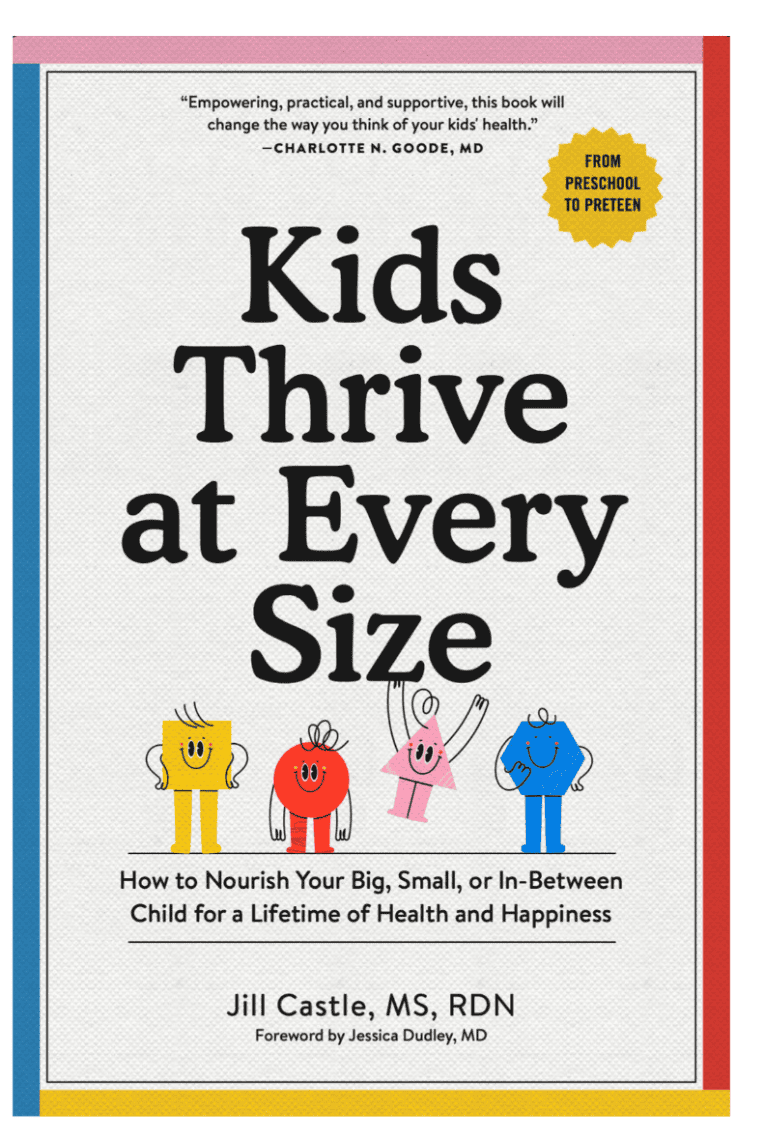The Plant-Based Diet for Kids: A Know-How Guide for Parents
May 7, 2021
Thinking about starting more kid-friendly plant-based meals with your family? You’re in the right place! Learn about what goes into family-friendly plant-based meals and how to ease your brood into this healthy eating pattern.
Does your child or teen talk about becoming a vegetarian?
Are you intrigued by the health benefits of plant-based foods for your family but don’t know where to start or if it’s safe?
A plant-based diet is associated with lower rates of heart disease (cardiovascular disease), cancer and diabetes, making it one of the healthiest diets you can adopt for your family.
So what’s the benefit for kids?
A diet of processed foods and few fruits and vegetables takes its toll on the body over time, potentially leaving out essential nutrients, contributing to cholesterol levels, and high blood pressure.
The greatest benefit of a healthy diet is its role in the possible prevention of some diseases, and it establishes lifelong healthy eating habits.
A healthy plant-based diet is rich in disease protecting phytonutrients.
And with a little planning, family friendly plant-based meals contain all the necessary nutrients your child needs for healthy growth.
I’ll show you how to get your family started on a safe plant-based diet for kids.
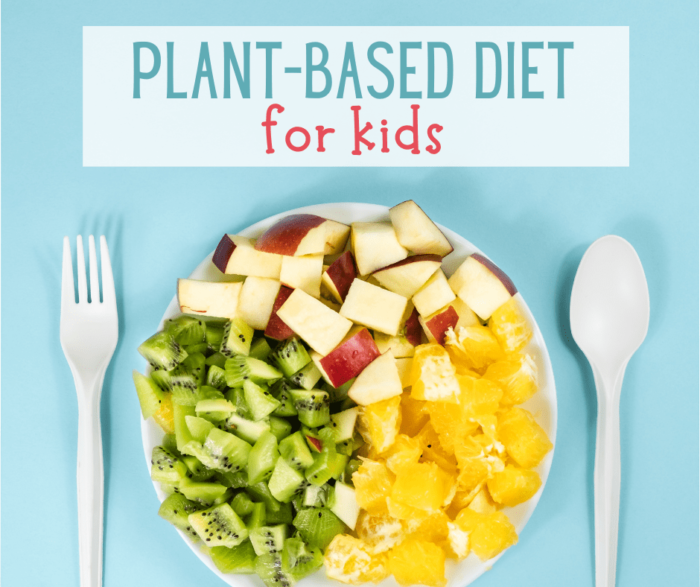
What Is a Plant-Based Diet?
Let’s start with what a plant-based diet is not.
“Plant-based” doesn’t mean a diet of meat-free products like soy hotdogs or platefuls of cheesy pasta or pizza.
In fact, when we talk about a plant-based diet, we’re talking about a diet of mainly whole foods found in nature that’s processed only enough to get it from the farm to your table.
There’s a variety of plant-based diets, and it doesn’t always mean completely giving up meat or animal-based foods.
Eating a plant-based diet means making fruits, vegetables, nuts, seeds, legumes, beans and whole grains the basis of your family’s meals and snacks.
[Watch Plant-Based Diets for Kids on YouTube!]
Vegetarian vs Veganism
If a plant-based diet doesn’t mean giving up meat, how does vegetarianism and a vegan diet fit in?
These are two types of plant-based diets with different allowances for animal products.
Vegans eliminate all animal foods such as red meat, poultry and fish, and all animal products such as dairy products and eggs.
Ethical vegans also eliminate any product that may come from an animal source, including honey (made by bees), for example.
Different types of vegetarian diet exist depending on one’s preference or religion.
Vegetarians don’t eat meat or poultry, although some eat fish (a pescatarian diet).
A vegetarian diet could also include dairy foods and eggs, except for lacto-vegetarians who eat milk products, but not eggs.
Any time your child eliminates one or more of the five food groups, it’s time to pay attention to the nutrients they might miss and to the foods they’re eating instead.
Is a Plant-Based Diet Safe for Kids?
Most parents are concerned about their child getting enough protein and meeting protein needs on a plant-based diet.
But lack of protein isn’t usually a problem, even for the most strict vegetarians.
Many foods have some protein, including grains and breads such as cereal and rice, so your child should get enough protein from a balanced diet as long as he adds some plant-based proteins, such as:
- Beans, such a black, pinto, garbanzo and black-eyed peas
- Nuts and nut butters, seeds and legumes (peanuts and lentils)
- Soy milk and soy products (tofu)
- Edamame
- Quinoa (a grain high in protein)
The micronutrients mainly found in animal foods are the nutrients you want to make sure your child replaces with plant-based sources, such as iron-rich foods.
It’s crucial that kids get enough vitamins and minerals to ensure healthy growth.
Eating a lot of fruits, vegetables, and whole grains means your child will probably getting enough fiber.
But making this change to plant-based eating may cause physical discomfort initially.
Gradually increase the high-fiber foods in your child’s diet to ease their gastrointestinal system into it.
As long as your child gets enough calories, protein and micronutrients (especially the ones below), a plant-based diet is safe.
This table lists the vitamins of concern for diets low in animal foods for children 1-18 years old and plant-based sources of these nutrients.
[Read more about calcium rich foods and vitamin D for kids so you can be on top of these important nutrients.]
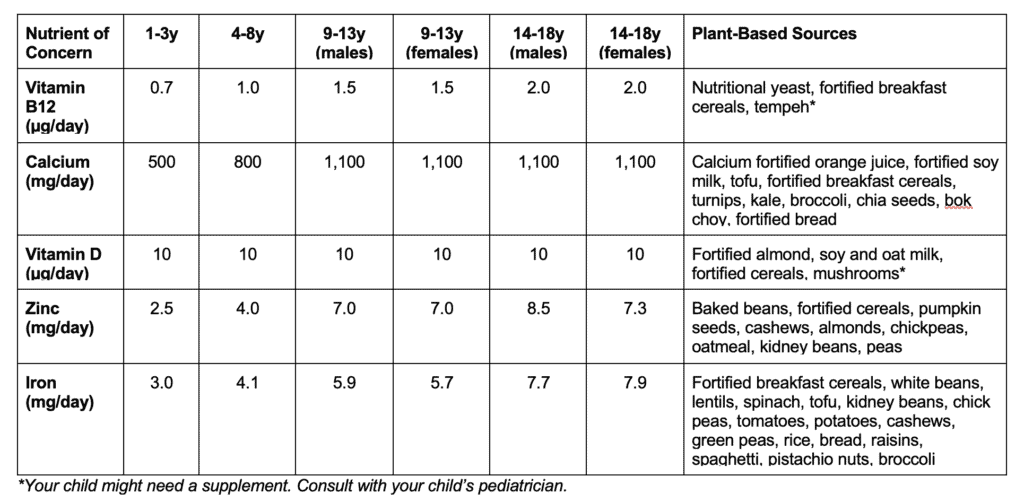
A note about plant-based milk: There’s a variety of plant-based “milks” (oat, almond, coconut) but they don’t have the same amount of protein and fat as cow’s milk. Soy milk as a cow’s milk alternative is a good choice because it closely mimics cow’s milk nutrition. If you have a young child and choose other milk alternatives, you will need to incorporate key nutrients from other sources.
Who Is a Plant-Based Diet Not Recommended For?
A plant-based diet is a healthy diet, but the priority is always to make sure your child is eating enough to grow.
Here are some examples of when a plant-based diet might not be a good idea for your child.
- If your child’s a picky eater. A picky eater’s diet is already limited, so you don’t want to take away any foods he’s willing to eat. Introducing a whole new diet might increase a picky eater’s anxiety and make the situation worse.
- If you suspect an eating disorder. It’s not uncommon for kids or teens with eating disorders to eliminate food groups, particularly the animal protein group. Plant-based diets are healthy, but you don’t want to encourage eliminating food groups with an eating disorder.
- If your child has multiple food allergies. Three of the 9 common food allergens are protein sources on a plant-based diet. If your child has a soy, peanut or tree nut allergy, it might be difficult for him to get the nutrients, calories and good sources of protein he needs without animal sources of food.
Pro Tips for Plant-Based Eating
“Plant-based” isn’t a “diet” to be used to restrict what your child eats.
It’s a healthy eating pattern and a lifestyle choice your family makes.
Here are some recommendations to transition to a plant-based diet for children:
- Don’t make separate meals for your kids.
- Continue to offer a variety of foods.
- Offer kid friendly plant-based food sources and meals and allow your child to choose what and how much they eat.
- Don’t eliminate all the foods your child likes and is used to. Introduce new meals gradually.
- Keep your eye on nutritional needs and food choices, as these can change as your child grows.
A plant-based diet isn’t just about eliminating foods such as meat in the name of health. After all, Oreos and Cool Ranch Doritos are vegan.
Focus on the foods that make up the bulk of what your child eats.
Keep your child’s pediatrician in the loop so they guide you and monitor your child for nutrient deficiencies, especially if your child eliminates all animal products.

Need More Help?
Check out our online shop, full of classes, books and guides for parents – they’re all geared to help you raise a nourished child, inside and out!


Jill Castle, MS, RD
I like empowering parents to help their children and teens thrive at every size with realistic advice centered on healthful habits around food, feeding, nutrition and health behaviors. As a pediatric dietitian and author, my goal is to share strategies and realistic advice to help you raise a healthy and happy child through my articles and podcast.

